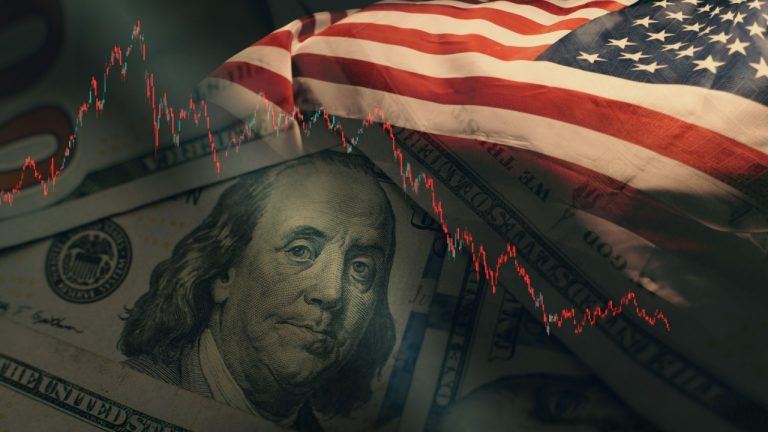By Hedy Bi
Planning by Lola Wang
On March 24, Bo Hines, Executive Director of former U.S. President Donald Trump’s Digital Asset Advisory Committee, made a striking proposal: selling part of America’s gold reserves to buy Bitcoin in a “budget-neutral” way. Just days earlier, the International Monetary Fund (IMF) had officially integrated Bitcoin into its global economic reporting framework. With Bitcoin now included in the Balance of Payments and International Investment Position Manual (BPM7), central banks and statistical agencies worldwide must account for Bitcoin transactions and holdings in their official reports. This marks a major shift — Bitcoin is no longer seen as merely a speculative asset but is gaining recognition as an institutional financial instrument. As of March 20, Bitcoin can now be considered a foreign reserve asset at the national level.
Yet, the most provocative aspect of the U.S. proposal is the idea of swapping gold — the ultimate safe-haven asset — for Bitcoin. This raises a fundamental question: Is gold still the undisputed store of value? If so, why, throughout history — from ancient Greece and Rome to today — have no corporations pursued an aggressive gold accumulation strategy akin to MicroStrategy’s Bitcoin buying spree? As policymakers reassess Bitcoin’s role in the global financial system, the U.S. seems to be taking the lead. Could this signal the beginning of a broader financial transformation?
In 2025, OKG Research launched a special series, Trumponomics, to track the impact of Trump’s second term on the crypto industry and global markets. This article explores the intriguing proposal of swapping U.S. gold reserves for Bitcoin, examining its deeper implications through a comparison between the two assets.
The United States holds the world’s largest official gold reserves, totaling 8,133.5 tonnes — a position it has maintained for over 70 years. However, a noteworthy fact is that these reserves have remained largely out of circulation, stored in locations such as the Kentucky Bullion Depository, Denver, and the New York Federal Reserve. Since the Nixon Shock of 1971 ended the Bretton Woods system, U.S. gold reserves have no longer backed the dollar but have instead served as a strategic asset, rarely sold directly.
If Washington intends to use its “excess gold reserves” to buy Bitcoin, it is unlikely to sell physical gold directly. Instead, it may turn to financial instruments linked to gold.
Historically, the U.S. Treasury has been able to generate additional dollar liquidity without increasing its physical gold holdings by adjusting the book value of its reserves — essentially a form of monetary maneuvering.
Currently, the Treasury values its gold at a fixed rate of $42.22 per ounce, a relic of the 1970s. This is far below the market price of around $2,200 per ounce. If Congress approves a revaluation of gold, the Treasury’s reserves would gain significant paper value, allowing it to issue more gold-backed certificates to the Federal Reserve in exchange for additional dollars.
This process would allow the U.S. to increase fiscal liquidity without directly expanding its money supply — a form of “stealth devaluation.” The extra liquidity could then be used to acquire Bitcoin, boosting U.S. Bitcoin reserves while maintaining the appearance of financial stability. Stephen Miran, a former economic advisor to the Trump administration, has argued that the U.S. faces a long-term trade deficit due to the dollar’s role as a global reserve currency — a classic example of the “Triffin Dilemma.” He suggests that revaluing gold could help break this cycle and ease upward pressure on interest rates. Bitcoin, as a non-sovereign asset, could benefit from such a shift.
On the surface, this approach could encourage other institutions and investors to follow suit, attracting more liquidity into the Bitcoin market. However, one cannot overlook a key risk: if the market perceives a long-term decline in the credibility of the U.S. dollar, the global asset pricing system could shift, making Bitcoin’s price discovery mechanism even more uncertain.
If the U.S. Treasury does revalue its gold and use the surplus to purchase Bitcoin, Bitcoin could experience a surge in demand. However, this would likely come with greater regulatory scrutiny and market intervention — just as gold faced after the collapse of the Bretton Woods system when its “free market pricing” was accompanied by heavy-handed state influence.
Gold has never been truly free.
Beyond its status as a safe-haven asset, gold has long served as a tool of monetary power. In the 1970s, during the Vietnam War era, the U.S. coordinated with other major economies to manipulate gold prices through a secretive “Gold Pool” arrangement to maintain confidence in the dollar. In the 1980s, the Reagan administration used “gold swaps” to indirectly control market supply. In the 2000s, the Federal Reserve leveraged gold leasing to inject liquidity into financial markets while keeping the dollar strong.
Even today, the U.S. gold reserve remains a “black box.” The official 8,133.5 metric tons figure has not been independently audited for decades, leading to speculation about its true state. While Washington does not directly sell its gold, it can influence its value through financial derivatives and book adjustments — an indirect but powerful tool of monetary policy.
This raises a deeper question: If gold is revalued to inject liquidity and Bitcoin is positioned as a hedge against the dollar, how will markets redefine financial trust? Will Bitcoin truly become “digital gold,” or will it, like gold before it, be absorbed into the U.S. financial system and subjected to similar controls?
If Bitcoin is indeed heading towards a fate similar to gold, absorbed and controlled by the dollar system, then as the U.S. increases its interest in holding Bitcoin, the market may enter a phase where Bitcoin becomes a “shadow asset.” In this scenario, the official recognition of Bitcoin’s value would be acknowledged, but its direct impact on the existing financial system would be restricted through policy and financial instruments.
Let’s assume the U.S. government decides to treat Bitcoin as a strategic asset and begins accumulating it. Unlike gold, Bitcoin is a decentralized asset that the government cannot directly control in terms of supply or price. However, the government could influence the market through shadow institutions (such as Bitcoin ETFs or Bitcoin trust funds), using these financial tools to indirectly impact Bitcoin’s price and market sentiment.
These shadow institutions could leverage the liquidity and volatility in the Bitcoin market to amass a large supply of Bitcoin in a “hoarding” state. The aim would be to release these Bitcoins at strategic times, influencing market supply and demand and price trends. This operation would be similar to gold market tactics such as “gold swaps” and “gold leasing,” where no actual transactions in gold occur, but the objective is achieved through financial tools and market strategies.
Let’s not forget the “bubble” that exists in gold derivatives or even the true existence of gold itself. In 2011, analysts estimated that the ratio of paper gold to physical gold on COMEX could be as high as 100:1. Another example is the seven-year-long process of repatriating Germany’s gold in 2013, sparking speculation that the U.S. Federal Reserve might not have enough physical gold, or that some of it had been leased or pledged.
But will Bitcoin follow the same path? Based on current trends in blockchain technology, the answer may be no.
- Gold’s “Black Box” vs. Bitcoin’s Transparency
Bitcoin is not a “black-box” operation; all transactions can be traced on-chain. Its decentralized nature gives it an advantage in terms of transparency and auditability over gold. As a native asset on the blockchain, Bitcoin’s transactions are fully public and auditable. Anyone can track Bitcoin’s circulation using on-chain data tools like OKX Explorer.
Moreover, Bitcoin’s network consists of decentralized, independent nodes, each holding a complete transaction ledger and jointly verifying transactions. A single institution or country cannot alter or manipulate Bitcoin’s transaction data. Bitcoin does not rely on third-party institutions for auditing, and according to on-chain data from OKX Explorer, the total holdings in whale wallets (those with 1000+ BTC) account for 30%-35% of the total supply, amounting to between 6 million and 7 million BTC. This alone exceeds the combined holdings of centralized exchange hot wallets and institutional custody, where funds stored in on-chain Bitcoin wallets are fully transparent and globally traceable.
This real-time efficiency is far superior to the quarterly or annual updates of gold reserve reports from most countries, and it prevents situations like the seven missing Knox Gold Audit reports from the U.S. Treasury. Due to the lag in reserve reporting, market reactions to changes are often delayed.
2. Financial Run Risk vs. Bitcoin’s Risk Resilience
One of the problems with the traditional financial system is its centralized management model, which creates systemic risk. For example, the collapse of Lehman Brothers in the 2008 financial crisis set off a chain reaction, and the 2023 collapse of Silicon Valley Bank (SVB) highlighted the vulnerability of the banking system. When liquidity panic sets in, banks may face large-scale runs, and the traditional financial system relies on government bailouts and Federal Reserve interventions to maintain stability.
Even Bitcoin stored in centralized exchanges has technical solutions to verify the actual storage situation of these assets. For instance, OKX officially launched its Proof of Reserves (PoR) program on November 23, 2022, making it a core tool for transparency and user protection. An excess PoR (PoR greater than 100%) means that the exchange or custodial institution holds more assets than the total deposits from all users, providing an additional safety buffer to ensure that even during extreme market fluctuations or asset losses, the institution has enough reserves to meet all user withdrawal requests. This contrasts with the traditional banking system, where reserve ratios are often below 100%, and banks face serious liquidity problems when trust crises emerge.
The U.S. strategy of revaluing gold and using it to create “new” dollars to purchase Bitcoin is not only a form of shadow currency manipulation but also exposes the fragility of the global financial system. Whether Bitcoin will truly become an independent, free “digital gold” or merely a subordinate asset of the U.S. financial system remains to be seen. However, from a technical standpoint, both the real-time, transparent nature of on-chain transactions and centralized institutions’ PoR mechanisms offer fresh solutions for the traditional financial system. The proposal to exchange gold for Bitcoin opens a profound dialogue about the future of the financial system.

 4 days ago
26
4 days ago
26







 English (US) ·
English (US) ·